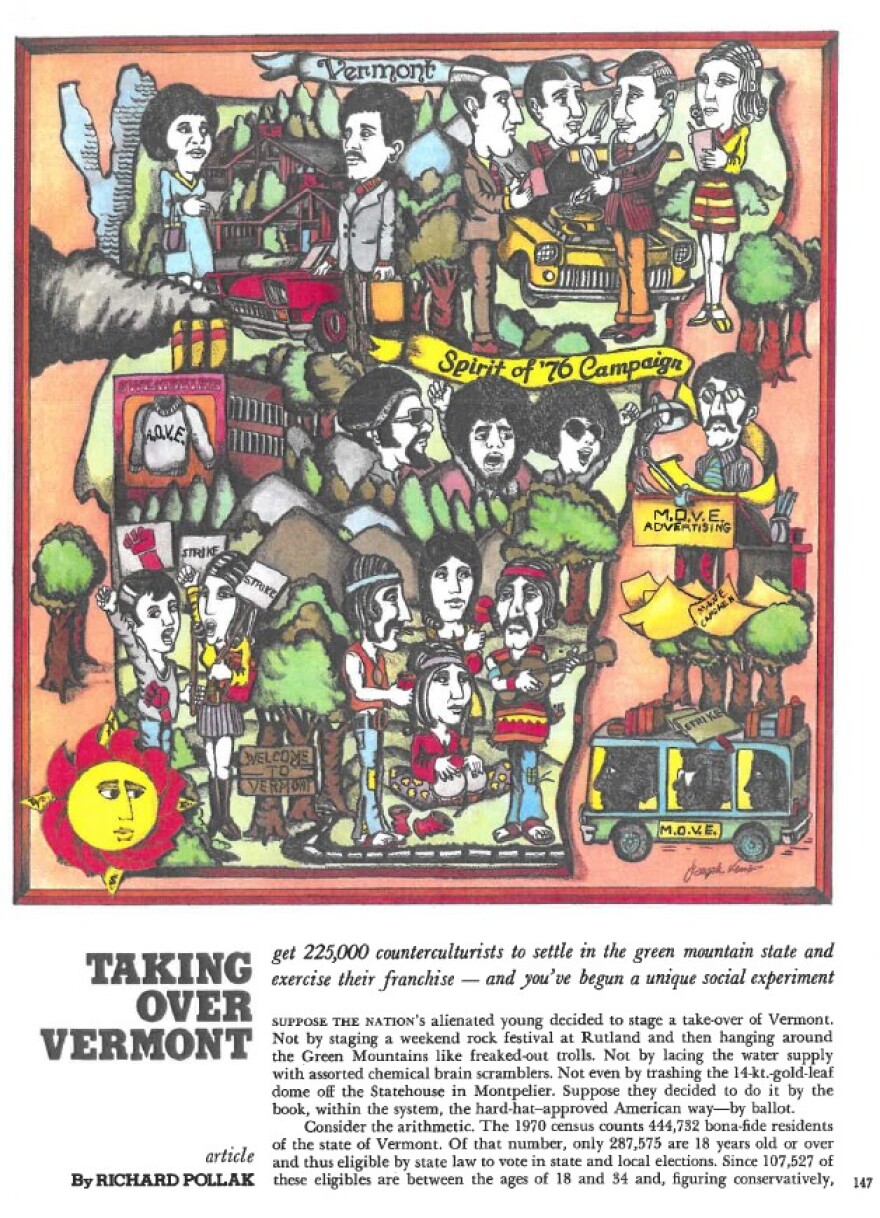Brave Little State is Vermont Public’s listener-driven journalism show. In each episode, we answer a question about Vermont that’s been asked and voted on by you, our audience — because we want our journalism to be more inclusive, more transparent and more fun.
In this episode, reporter Mae Nagusky answers a question about intentional living from Ella Wegman-Lawless, of Denmark (by way of Vermont and the Midwest):
“Does Vermont have a high number of communes? If so, what’s the deal?”
Note: Our show is made for the ear! We recommend pressing play on the audio posted here. For accessibility, we also provide a transcript of the episode here.
Loading...


_







_
Additional resources:
- Back to the Land: Communes in Vermont, 1968
- Those 'aging hippies' who moved to Vermont...Where are they now?
- Where are Vermont's 'aging hippies'? One's on the state Supreme Court
- Foundation for Intentional Community directory
Credits
Thanks to Ella Wegman-Lawless for the great question.
Mae Nagusky reported this episode, and did the mix and sound design. Josh Crane produced it, with editing and additional production from the rest of the Brave Little State team: Myra Flynn and Angela Evancie. Ty Gibbons composed our theme music; other music by Blue Dot Sessions.
Special thanks to Lexi Krupp, Eric George, Marlie and Julia Hunt, Hannah Braun, Colin Bradley, Sara Peterson, Colton Francis, Luigi Morelli and the Hungerfort Community House.
As always, our journalism is better when you’re a part of it!
- Ask a question about Vermont
- Vote on the question you want us to tackle next
- Sign up for the BLS newsletter
- Say hi on Instagram and Reddit @bravestatevt
- Drop us an email: hello@bravelittlestate.org
- Call our BLS hotline: 802-552-4880
- Make a gift to support people-powered journalism
- Leave us a rating/review on your favorite podcast app
- Tell your friends about the show!
Brave Little State is a production of Vermont Public, and a proud member of the NPR Network.








